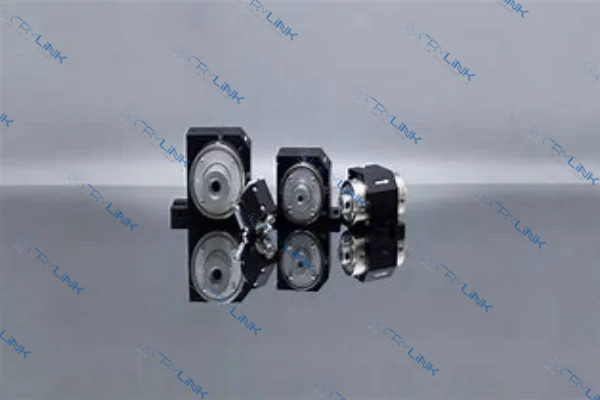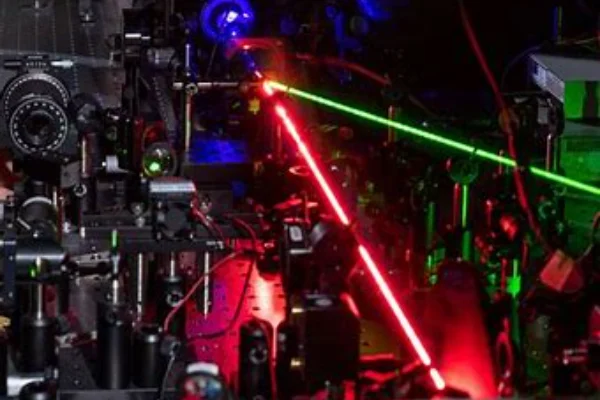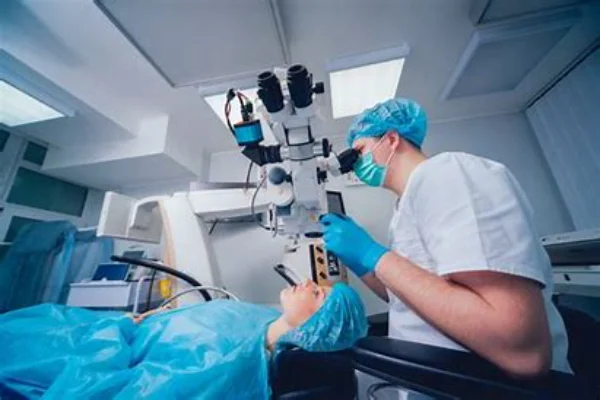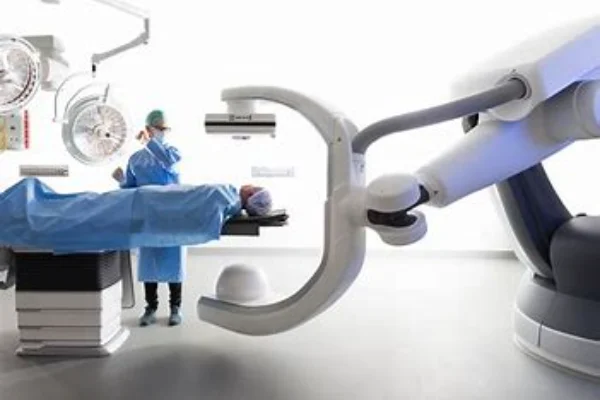Introduction to Extracavity Frequency Doubling
Extracavity frequency doubling is a pivotal technique in the realm of optics. It allows for the generation of light at half the wavelength of the input laser beam. By harnessing the power of optical isolators, we can significantly enhance the efficiency of this nonlinear conversion process.

The Role of Optical Isolators in Nonlinear Conversion
Optical isolators, as their name suggests, play a pivotal role in isolating light, ensuring it travels in a singular direction. This unique characteristic is not just a mere feature but a necessity in many advanced optical applications, especially in the realm of nonlinear conversion. The essence of their operation lies in their ability to prevent any form of unwanted feedback into the laser source. Such feedback, if not controlled, can lead to a myriad of issues, including destabilization of the laser output and potential damage to the laser source itself. Thus, the unidirectional flow facilitated by optical isolators becomes indispensable for maintaining both the stability and efficiency of the frequency-doubled output.
Diving deeper into the inner workings of optical isolators, one encounters the fascinating world of the Faraday effect. This effect is the cornerstone upon which optical isolators function. In essence, when light passes through a magneto-optic material present in the isolator, its plane of polarization undergoes a rotation. This might seem like a simple rotation, but its implications are profound. When this rotation is paired with polarizers, a unique scenario unfolds: light is allowed to travel strictly in one direction, and any attempt for it to reflect back is thwarted.
The benefits of using optical isolators are manifold. First and foremost, they bestow enhanced stability to the entire optical system. Anyone familiar with lasers knows that stability is paramount. Even minor fluctuations or feedback can drastically alter the desired output, rendering the system inefficient or, in some cases, entirely non-functional. Optical isolators, by preventing this destabilizing feedback, ensure that the laser source remains consistent in its output.

Furthermore, the efficiency of the system receives a significant boost with the inclusion of optical isolators. By ensuring that the maximum amount of light undergoes the process of frequency doubling, optical isolators guarantee that the output power is optimized. In simpler terms, more light undergoing frequency doubling translates to a brighter, more powerful output, which is often the desired outcome in many optical applications.
Lastly, the protective role of optical isolators cannot be understated. Lasers, despite their power and utility, are delicate. Reflected light, if it finds its way back to the source, can be detrimental. It can not only degrade the quality of the laser output but also physically damage the laser source. Optical isolators, by blocking this reflected light, act as guardians of the laser source, ensuring its longevity and consistent performance.
In conclusion, optical isolators, with their unique ability to direct light in a singular direction, have revolutionized the field of nonlinear conversion. By offering enhanced stability, increased efficiency, and robust protection to the laser source, they have cemented their position as indispensable tools in the world of optics. As technology continues to advance, the role of optical isolators will only become more pronounced, underlining their significance in shaping the future of optical applications.

Applications of Frequency-Doubled Lasers
The marvel of frequency-doubled lasers lies in their versatility, finding applications in diverse domains from healthcare to fundamental physics. One of the most transformative impacts of these lasers is observed in medical imaging. The enhanced resolution offered by frequency-doubled lasers has revolutionized diagnostic procedures. For instance, in the field of ophthalmology, these lasers facilitate detailed retinal scans, enabling doctors to detect and diagnose eye conditions with unprecedented accuracy. The clarity provided by these lasers ensures that even the minutest of anomalies are not overlooked, paving the way for timely interventions and treatments.
Moving from the medical realm to the domain of research, spectroscopy stands as a testament to the prowess of frequency-doubled lasers. Spectroscopy, a technique used to study the interaction between matter and electromagnetic radiation, has been significantly enhanced with these lasers. Their ability to probe a broader spectrum of materials means that researchers can now detect substances in minute quantities that were previously elusive. This heightened sensitivity is invaluable, especially in fields like chemistry and environmental science, where understanding the composition of samples down to the molecular level is crucial.
However, the applications of frequency-doubled lasers are not just confined to the macroscopic world. They play a pivotal role in the microscopic realm of quantum physics, particularly in laser cooling experiments. These experiments, which involve cooling atomic particles to temperatures close to absolute zero, demand unparalleled precision. Frequency-doubled lasers rise to the occasion, offering the stability and accuracy needed to control atomic particles with finesse. By achieving these ultra-cold temperatures, scientists can delve deeper into the mysteries of quantum behaviors, unraveling the fundamental principles that govern our universe.
In essence, frequency-doubled lasers, with their myriad applications, are shaping the future of science and medicine. Their transformative potential is a testament to the advancements in laser technology and its far-reaching implications in various fields of study.

Enhancing Nonlinear Conversion Efficiency
In the intricate world of optics, the quest for efficiency is relentless. Especially when delving into the realm of extracavity frequency doubling, the nuances that dictate efficiency become all the more pronounced. Achieving optimal efficiency is not just about harnessing the most out of the available resources; it’s about fine-tuning every aspect of the process to ensure that the output is maximized.
One of the primary techniques employed to enhance efficiency in this domain is phase matching. At its core, phase matching is about ensuring harmony between the fundamental and second harmonic waves. When these waves are in sync, their phase velocities align perfectly. This alignment is not just a mere coincidence; it’s a meticulously orchestrated synchronization that ensures that energy transfer between the waves is maximized. The result? A significant boost in conversion efficiency. But achieving this synchronization is no small feat. It requires a deep understanding of wave dynamics and the ability to manipulate these waves to ensure they are perfectly matched.
While phase matching is undeniably crucial, the role of nonlinear crystals in determining efficiency cannot be understated. These crystals are the heart of the frequency doubling process. Their quality, type, and characteristics directly influence the efficiency of the conversion. High-quality nonlinear crystals, characterized by their higher damage thresholds, ensure that the process can occur at higher intensities without the risk of damaging the crystal. Furthermore, crystals with broader phase-matching bandwidths are sought after, as they offer greater flexibility in the frequency doubling process, accommodating a wider range of input frequencies. The choice of the right crystal, therefore, becomes a pivotal decision, one that can significantly influence the outcome of the frequency doubling process.
However, even with perfect phase matching and the best nonlinear crystals, the efficiency can be compromised if the laser beam isn’t focused optimally into the crystal. The act of focusing isn’t just about directing the beam; it’s about ensuring that the maximum amount of light interacts with the crystal. This interaction is where the magic of frequency doubling happens. A well-focused beam ensures that the light’s intensity is maximized at the interaction point, leading to efficient frequency doubling. Achieving this optimal focus requires a combination of precision optics and meticulous alignment. Any deviation can result in sub-optimal interaction, leading to reduced efficiency.
In conclusion, the journey to enhance nonlinear conversion efficiency in extracavity frequency doubling is multifaceted. It’s a delicate balance of phase matching, choosing the right nonlinear crystals, and ensuring optimal beam focusing. Each of these factors, while significant in its own right, needs to work in harmony with the others to achieve the desired efficiency. As advancements in optics continue, the pursuit of even greater efficiency will drive innovations, pushing the boundaries of what’s possible in the world of frequency doubling.

Conclusion
Extracavity frequency doubling, when combined with the protective and stabilizing features of optical isolators, offers a powerful tool in the world of optics. From medical imaging to quantum experiments, the applications are vast and varied. By understanding and leveraging the intricacies of this process, we can harness the full potential of frequency-doubled lasers, pushing the boundaries of what’s possible in optical research and applications.
FAQs
- What is the primary function of an optical isolator in frequency doubling?
- Optical isolators allow light to pass in only one direction, enhancing stability and efficiency in the frequency doubling process.
- How does phase matching contribute to nonlinear conversion efficiency?
- Phase matching ensures that the phase velocities of the fundamental and second harmonic waves are aligned, leading to maximum energy transfer and higher conversion efficiency.
- Why are optical isolators crucial in medical imaging?
- They provide higher resolution and clarity in images, allowing for more accurate diagnosis and treatment.
- What role do nonlinear crystals play in frequency doubling?
- Nonlinear crystals are the medium in which the frequency doubling process occurs. Their quality and type determine the efficiency of the conversion.
- How do optical isolators protect the laser source?
- By blocking reflected light and preventing feedback, optical isolators safeguard the laser source from potential damage and destabilization.







